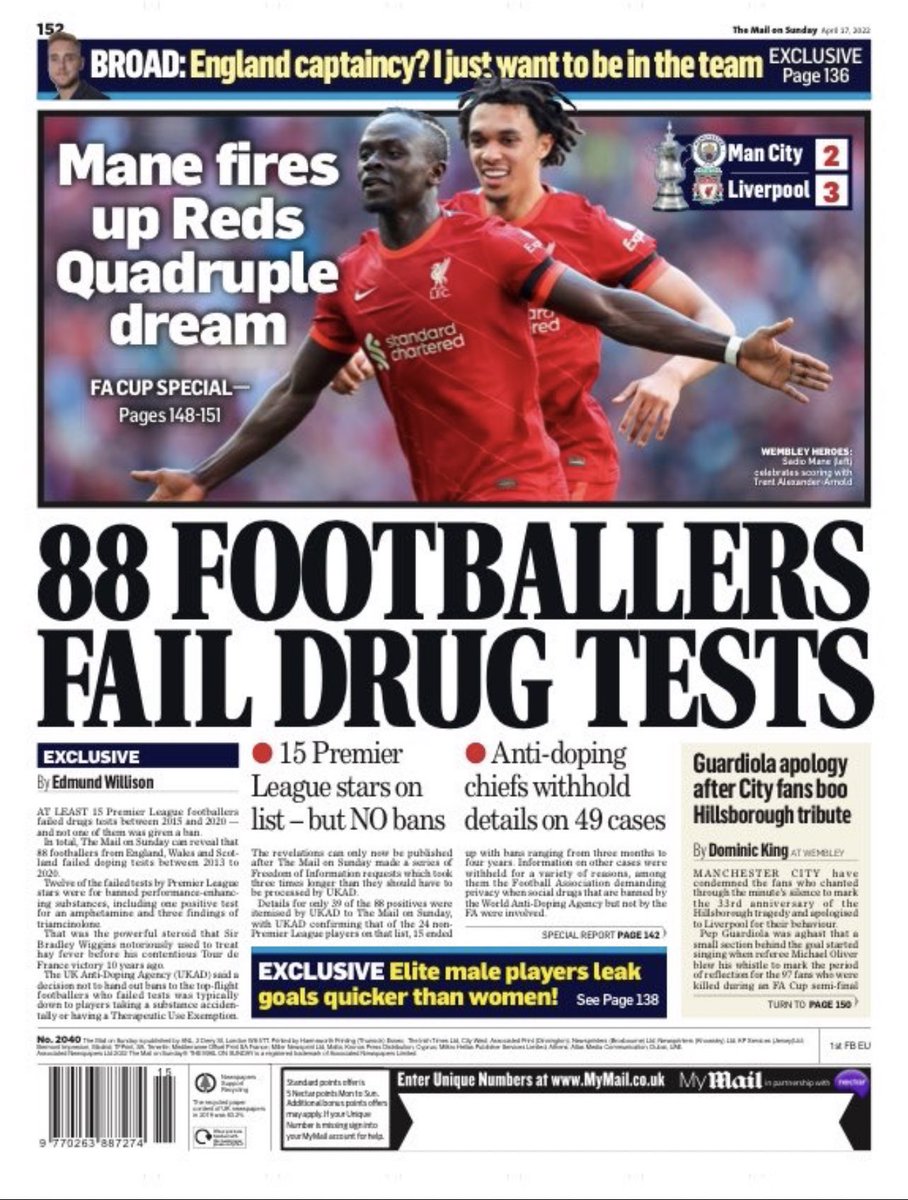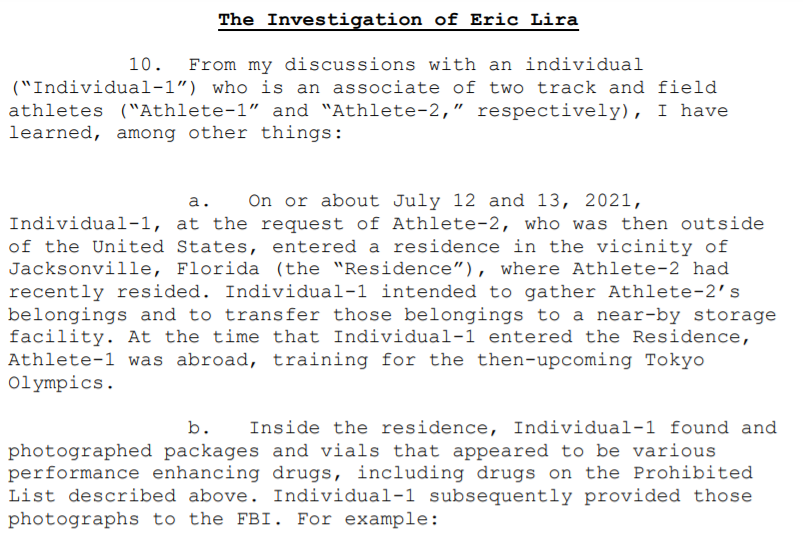Jannik Sinner has controversially re-hired the physical trainer whose actions led to him testing positive for clostebol.
This is a 🧵on whether his team members knew, or should have known, that the spray which contaminated him contained a banned drug:
🖇️api.omarshehata.me/substack-proxy…
This is a 🧵on whether his team members knew, or should have known, that the spray which contaminated him contained a banned drug:
🖇️api.omarshehata.me/substack-proxy…
To recap - Sinner twice tested positive for clostebol in 🇺🇸 in '24 after he unknowingly absorbed the anabolic steroid clostebol during a massage performed by his physio Giacomo Naldi.
Naldi was using a spray called Trofodermin, containing clostebol, to treat a cut on his finger.
Naldi was using a spray called Trofodermin, containing clostebol, to treat a cut on his finger.

Naldi claims he was unaware the unpackaged spray contained clostebol despite it being clearly marked.
Sinner's physical trainer Umberto Ferrara, who he has now re-hired, was the individual who had bought the spray which has a 'Doping' warning sign on the packaging.
Sinner's physical trainer Umberto Ferrara, who he has now re-hired, was the individual who had bought the spray which has a 'Doping' warning sign on the packaging.

Ferrara, who suggested the spray to Naldi, says he used Trofodermin to treat a chronic condition.
Naldi says he had 'no knowledge' the spray contained clostebol.
Let's see, using open-source information, whether he could have known.
Naldi says he had 'no knowledge' the spray contained clostebol.
Let's see, using open-source information, whether he could have known.

Firstly, Naldi was a physio at the 🏀 team Virtus Bologna for 6 years before working with Sinner.
According to the team's 'Code of Ethics' from the time, staff members were required to avoid inadvertent doping cases.
3 years later, Sinner inadvertently tests positive.
According to the team's 'Code of Ethics' from the time, staff members were required to avoid inadvertent doping cases.
3 years later, Sinner inadvertently tests positive.
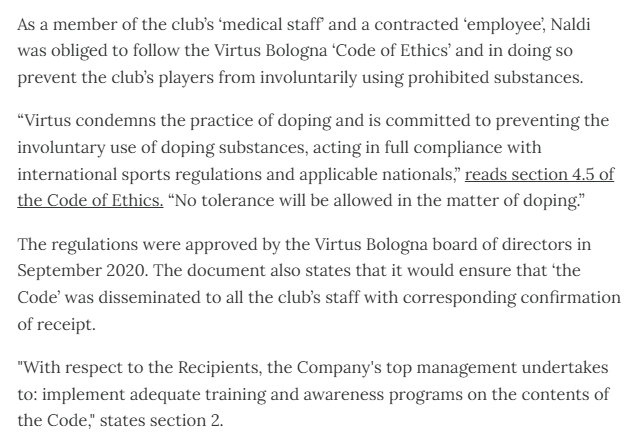
Despite this experience in anti-doping from his time at Virtus Bologna, Naldi claims he did not conduct the simple task of checking whether the Trofodermin spray he was using contained the anabolic steroid clostebol.
Again, clostebol is clearly marked on the spray:
Again, clostebol is clearly marked on the spray:

Now, let's assess whether 🇮🇹 support staff working in sport, such as Naldi, who are educated in anti-doping, should have been aware of the risks of clostebol prior to Sinner's case:
Between 2019 and 2023, there were 38 positive doping tests for clostebol in Italy.
Between 2019 and 2023, there were 38 positive doping tests for clostebol in Italy.
There were also clostebol cases involving Italian basketball players during Naldi's time working in the sport.
Two members of a big rival team, Olimpia Milano, tested positive for clostebol in 2019 and 2021.
They were national team players.
Two members of a big rival team, Olimpia Milano, tested positive for clostebol in 2019 and 2021.
They were national team players.

The drug was even known in 🇮🇹 support staff circles.
Three decades ago, the current Italian Olympic doctor Andrea Billi, who was the basketball team doctor for many years, accidentally gave the player Mario Boni the same Trofodermin spray which caused Sinner to test positive.
Three decades ago, the current Italian Olympic doctor Andrea Billi, who was the basketball team doctor for many years, accidentally gave the player Mario Boni the same Trofodermin spray which caused Sinner to test positive.

But it is the clostebol case of the Olimpia Milano player Riccardo Moraschini which requires the closest attention.
Moraschini describes his case as 'identical' to Sinner's.
Did Naldi know about it at the time? Well, one of his players at Virtus Bologna did.
Moraschini describes his case as 'identical' to Sinner's.
Did Naldi know about it at the time? Well, one of his players at Virtus Bologna did.
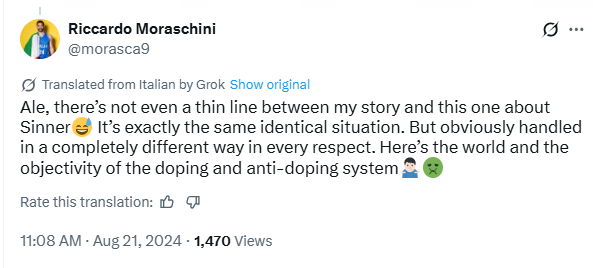
When Olimpia Milano's Moraschini announced on Instagram that he had been suspended by the Italian anti-doping agency, the Virtus Bologna player Marco Ceron replied to the post, in the comments section, with three heart ❤️'emojis'.
The timing of the post is important as well.
The timing of the post is important as well.
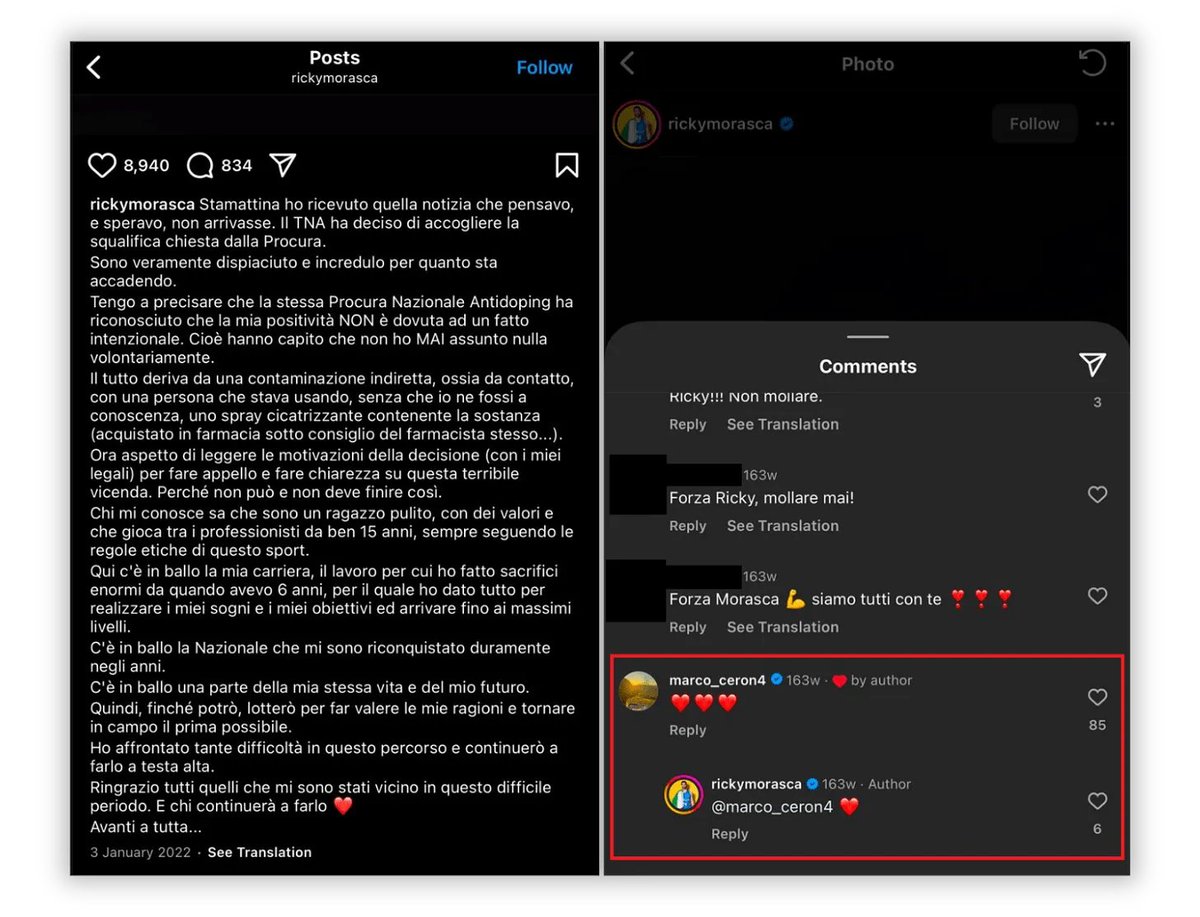
The post was on 3rd January 2022.
Just two days later, with the story in the news, Naldi's Virtus Bologna played Moraschini's team Olimpia Milano.
The teams were well known to each other. They played six times months later in the championship finals. How many of the team knew?
Just two days later, with the story in the news, Naldi's Virtus Bologna played Moraschini's team Olimpia Milano.
The teams were well known to each other. They played six times months later in the championship finals. How many of the team knew?
Did Naldi, a physio, educated in anti-doping, know? Or had he forgotten it by the time he inadvertently contaminated Sinner?
In Italian tennis, there were even 4 clostebol cases in the three years prior to Sinner's.
In Italian tennis, there were even 4 clostebol cases in the three years prior to Sinner's.
Between '21 and '23, the 🇮🇹 players Matilde Paoletti, Mariano Tammaro, Stefano Battaglino and Marco Bortolotti all failed drug tests for clostebol.
Battaglino claims he overlapped with Sinner at the Piatti Tennis Academy earlier in their careers.

Battaglino claims he overlapped with Sinner at the Piatti Tennis Academy earlier in their careers.


In the case of Matilde Paoletti, the Italian Tennis Federation announced the conclusion of the teenager's case on its Facebook page.
The risks of clostebol sprays and cream were clearly known in some parts of Italian tennis circles.
The risks of clostebol sprays and cream were clearly known in some parts of Italian tennis circles.
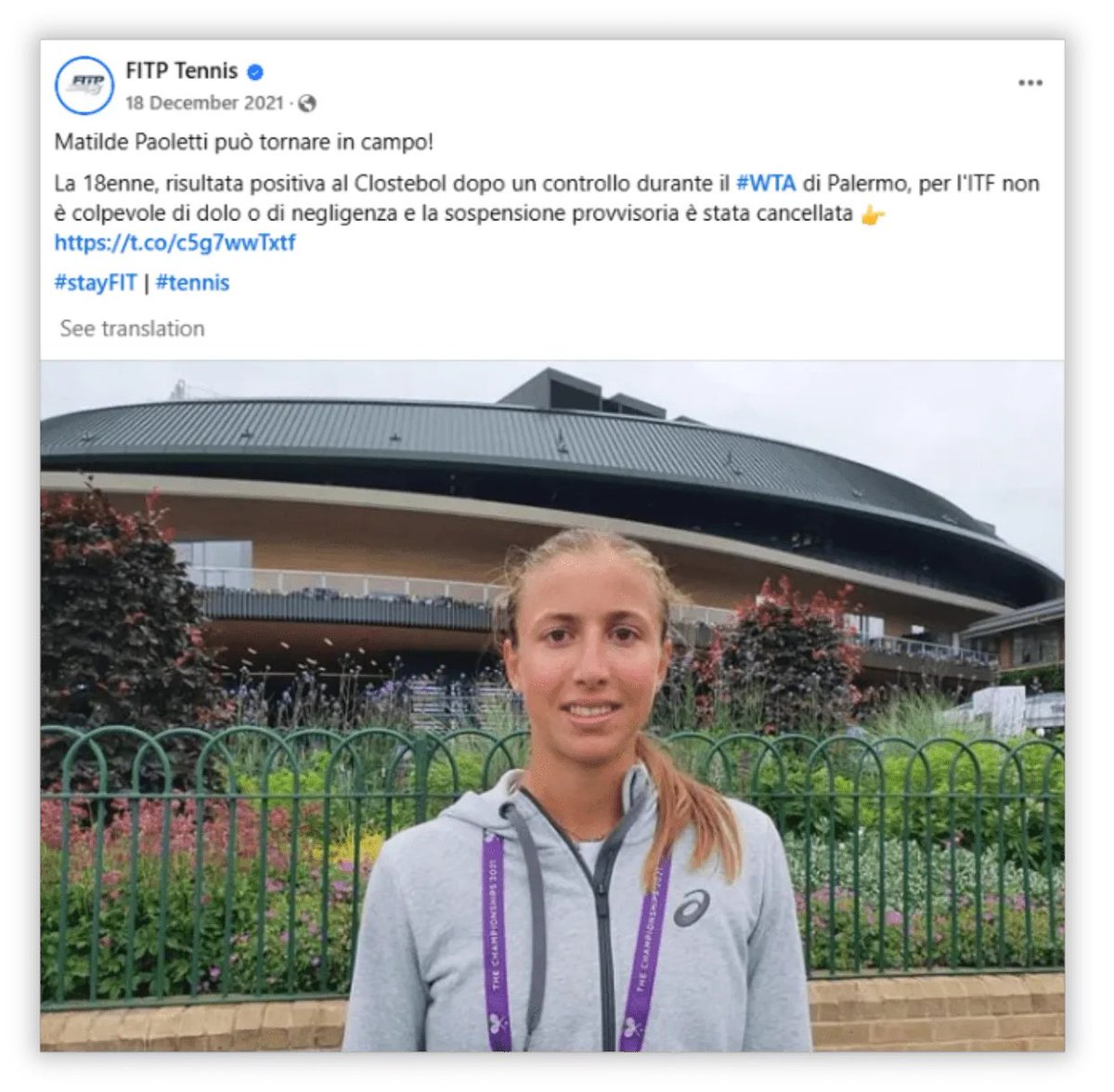
Ultimately, Giacomo Naldi may have indeed not known about the risks of clostebol sprays prior to contaminating Sinner.
However, Sinner's physical trainer Umberto Ferrara claimed recently that he warned Naldi that Trofodermin contained a prohibited substance.
However, Sinner's physical trainer Umberto Ferrara claimed recently that he warned Naldi that Trofodermin contained a prohibited substance.

Regardless, Sinner, who was cleared of intent to cheat and says his attention had never been drawn to the risks of clostebol, has put the spotlight back on his case by re-hiring Umberto Ferrara.
Giacomo Naldi is no longer part of Team Sinner.
Giacomo Naldi is no longer part of Team Sinner.

For full detail, please refer to a Long Read I have written on this open-source investigation:
api.omarshehata.me/substack-proxy…
api.omarshehata.me/substack-proxy…
• • •
Missing some Tweet in this thread? You can try to
force a refresh


